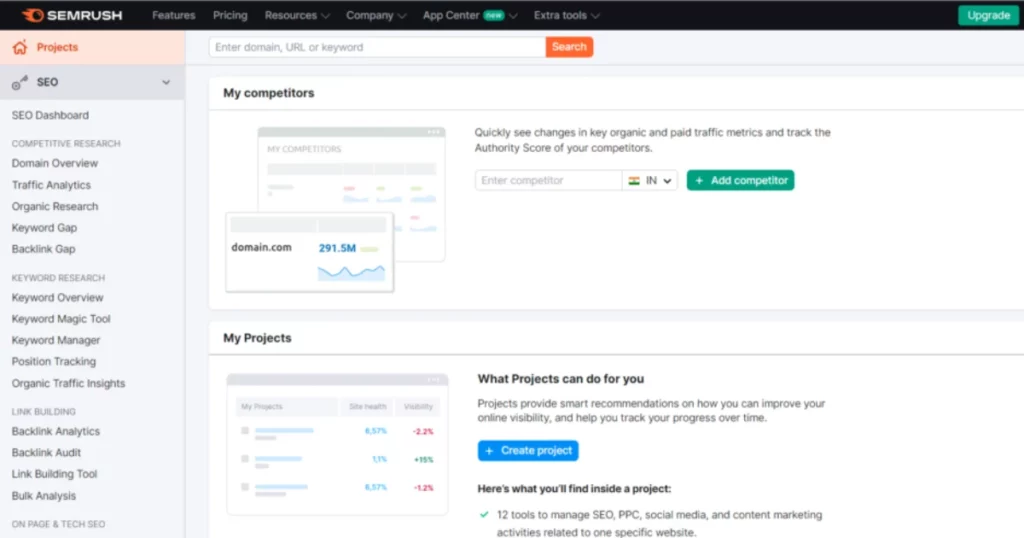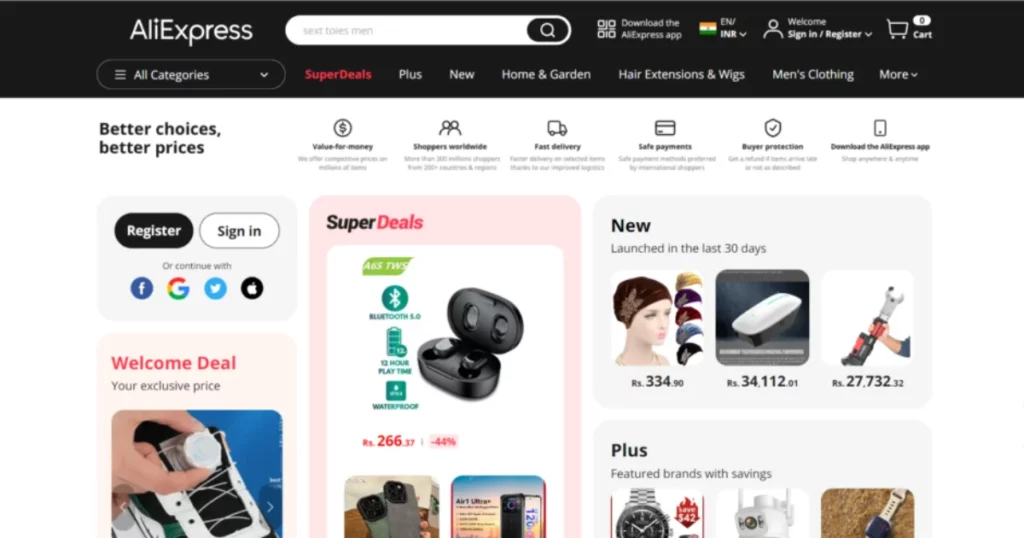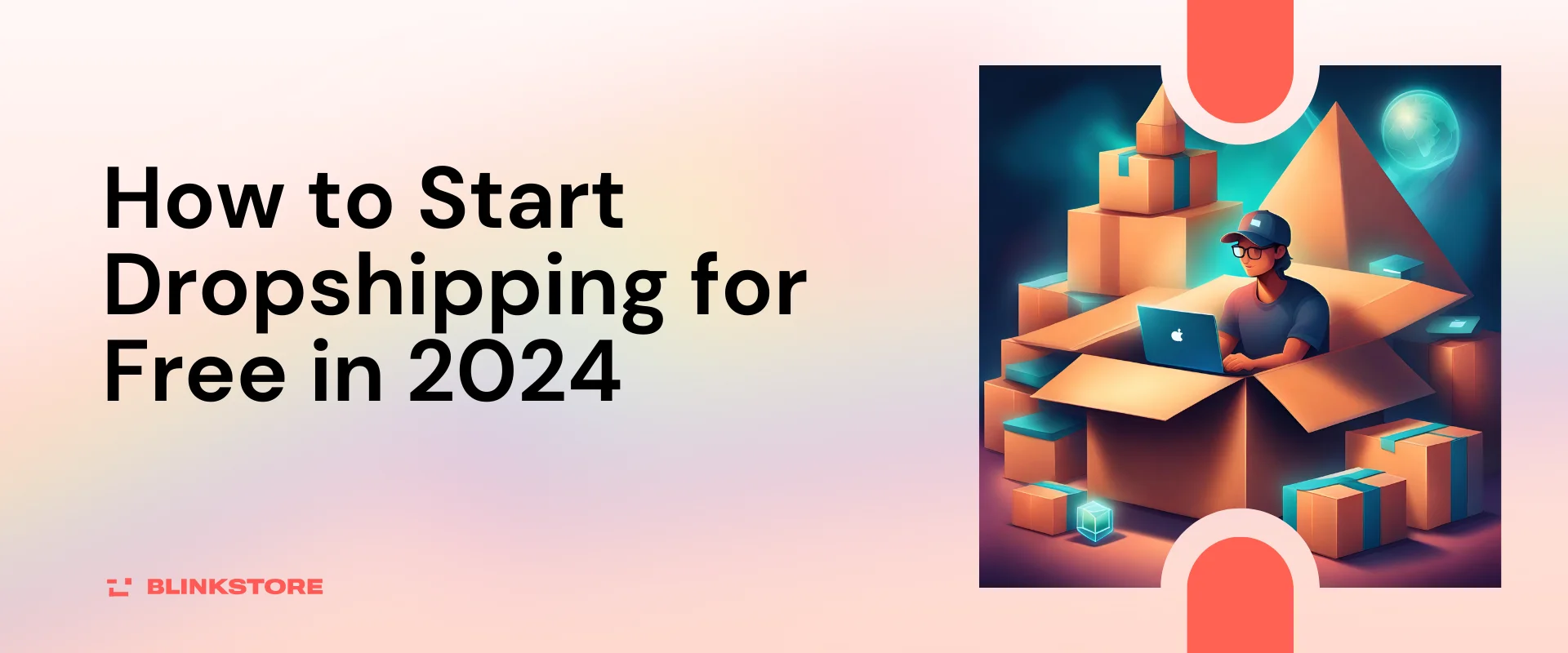So, you’ve got the vision of running your own online store. But here’s the deal – you’re not made of money, and starting a dropshipping business feels like stepping into a financial minefield. Dont worry! We have got you. We will tear down the barrier and show you how to start your dropshipping for free by keeping your initial costs at 0.
Table of Contents
This blog will explain what dropshipping is and show you how to launch a dropshipping company on a shoestring budget along with other aspects of dropshipping.
What Is Dropshipping?

Dropshipping is a retail fulfillment method where a store doesn’t keep the products it sells in stock. Instead, when a store sells a product using the dropshipping model, it purchases the item from a third party and has it shipped directly to the customer. As a result, you never have to see or handle products.
Read our blog “What is Dropshipping? How does it work? Pros and Cons” to get a more clear picture.
Pros and Cons of free dropshipping business
Before starting dropshipping, understand the pros and cons of free dropshipping of this model of business.
Pros of Free Dropshipping
- Low Initial Investment: Your biggest plus for free dropshipping is the minimal upfront costs. You don’t need to buy inventory or manage a warehouse, reducing your initial financial risk.
- Flexibility: With no physical inventory to manage, you can easily test and add new products to your online store without the constraints of traditional retail.
- Location Independence: Since you don’t handle the products, you can operate your dropshipping business from anywhere with an internet connection, offering a high level of geographical flexibility.
- Easier to Get Started: Setting up a dropshipping business is relatively quick and straightforward, especially with the availability of various e-commerce platforms and tools.
- Diverse Product Range: You can offer a wide range of products without the burden of stocking them. This allows you to cater to diverse customer interests.
Cons of Free Dropshipping
- Slim Profit Margins: The convenience of low upfront costs comes at a price. The per-unit cost of products in dropshipping is often higher, which can squeeze your profit margins.
- Dependency on Suppliers: Your business success relies heavily on the reliability and efficiency of your suppliers. Issues such as stockouts, shipping delays, or quality problems with the products can directly impact your reputation.
- Brand Control Challenges: Since you don’t handle the products, maintaining control over product quality, packaging, and branding can be challenging. Consistency is key, and it might be tough to achieve without hands-on involvement.
- Fierce Competition: Dropshipping is popular, and many businesses are using this model. The market can be saturated, leading to intense competition and making it harder to stand out.
- Limited Customization: You may have limited control over product features, packaging, or shipping options. This lack of customization can hinder your ability to differentiate your brand.
Start Dropshipping for Free With Blinkstore
How to Start Dropshipping for Free (In Steps)
Learning how to start dropshipping with no money will help you achieve your entrepreneurial aspirations. Let us take small steps to gain a better understanding of how to start dropshipping for free.
Step #1: Select Your Niche and Do Market Research
Find Your Niche:
- Explore your personal interests and passions.
- Use tools like Google Trends, Amazon Best Sellers, or social media trends to identify potential niches.
Competitor Analysis:

- Analyze successful dropshipping stores using tools like SEMrush or Ahrefs.
- Understand their product selection, pricing strategies, and customer engagement.
Step #2: Create a Comprehensive Business Plan
Set Your Business Model:
- Give a clear description of your target market and USP (unique selling proposition).
- Think about your revenue-generating strategies, such as product sales, affiliate marketing, or additional services.
Set Goals:
- Establish short-term and long-term goals.
- Goals might include revenue targets, website traffic, or social media engagement metrics.
Step #3: Create a Free E-commerce Platform
Launching your online store is an important factor in dropshipping. You can create an online store on Facebook, Instagram, or another social media platform. This won’t cost you any money, but you might find it difficult to promote your products if the account doesn’t have enough reach or popularity.
Your Next Option: Platforms like Shopify and WooCommerce do offer free trials but if you are looking for a complete free e-commerce platform Blinkstore is your best option out there. Not only is the platform completely free, but you can also use our free mock-up generator Mockey to design your products.
How to Create Your Online Store with Blinkstore

Enter Blinkstore
- Go to the website of Blinkstore.
- Open your web browser and go to the Blinkstore website to get started.
Now Sign Up
- Click the “Get Started” to create an account if you don’t already have one. Both your email address and a password must be entered.
- If you already have login credentials, use them to log in.
Launch your store
- You will be taken to your Blinkstore dashboard after logging in. You can start by creating your first store from here.
- Choose “New Store” after clicking the “Create +” button in the upper left corner. Write your store’s name.
- Make sure the subdomain name you select is something you would like to use.
Step #4: Source Products from Free Supplier Platforms

- Install Oberlo if you’re using Shopify or directly import products from Blinkstore or AliExpress
- Research products with high ratings, good reviews, and reasonable shipping times.
Research Suppliers:
- Contact suppliers directly to discuss terms and build relationships.
- Check for additional suppliers on platforms like Alibaba or DHgate for variety.
Step #5: Optimize Your Product Listings
Compelling Descriptions:
- Craft detailed and persuasive product descriptions, addressing customer pain points and highlighting benefits.
- Use persuasive language and storytelling to engage customers.
Quality Images:
- Ensure product images are clear and in high resolution, and showcase the product from different angles.
- Consider creating unique images or graphics for your store.
Step #6: Set Up Payment Gateways and Shipping
Payment Gateway:
- Integrate free payment gateways like PayPal or Stripe. Phone pe or Google Pay for Indian users.
- Test the checkout process to ensure it’s seamless for customers.
Shipping Settings:
- Define shipping zones and rates.
- Clearly communicate shipping times on product pages to manage customer expectations.
Step #7: Online Presence
You are now almost done, start building a good online presence at this point.
Social Media Presence:
- Set up business profiles on Instagram, Facebook, and Pinterest.
- Share engaging content related to your niche, including product showcases, tips, and behind-the-scenes content.
Content Marketing:

- Start a blog on platforms like Medium or WordPress to provide valuable content related to your products.
- Share your blog posts on social media to drive traffic.
Step #8: Optimize for SEO
Keyword Research:
- Use free tools like Google Keyword Planner, Ubersuggest, or Keywords Everywhere.
- Identify relevant keywords for product titles, descriptions, and blog content.
Optimize Product Titles and Descriptions:
- Incorporate selected keywords naturally into your product listings.
- Use header tags and meta descriptions to improve SEO.
Step #9: Customer Service and Feedback
Provide Customer Service:
- Set up a customer support system to respond promptly to inquiries.
- Address customer concerns professionally and promptly.
Collect and Showcase Reviews:
- Encourage customers to leave reviews on your website or platforms like Trustpilot.
- Display positive reviews prominently on your site.
Step #10: Scale and Iterate
Analyze Metrics:
- Use analytics tools provided by your e-commerce platform to monitor website traffic, sales, and customer behavior.
- Identify patterns and areas for improvement.
Experiment with Advertising:
- Explore free advertising options, such as social media marketing and influencer partnerships.
- Gradually reinvest profits into paid advertising as your business grows.

Why You Should Consider Free Dropshipping
Allow us to explain why this might be the right business for you:
- Zero Cost Entry: No hefty upfront investments. Dive into entrepreneurship without breaking the bank. Free entry, unlimited potential.
- Minimized Risks, Maximized Gains: Avoid the inventory gamble. With no stock on hand, you only purchase what you’ve sold. Risks shrink, and profits expand.
- Flexibility Personified: Run your business from anywhere. No warehouse, no stress. A laptop, Wi-Fi, and your passion are all you need.
- Test the Waters Without Drowning: Experimentation is key. Try different products, audiences, and marketing strategies. Learn, adapt, conquer.
- Supplier Handles Heavy Lifting: Your partners in success. Let suppliers manage inventory and shipping, freeing you to focus on strategy and growth.
Successful Tips On How To Start Dropshipping With No Money

If used properly, this cheat sheet can help you succeed considerably more quickly:
- Product Selection: Quality over quantity. Choose products aligned with your niche, ensuring they resonate with your target audience.
- Captivating Storefront: First impressions matter. Invest time in designing an appealing online store. Blinkstore’s customization tools are your backstage pass to a visually stunning performance.
- Good Customer Service: Swift responses, graceful resolutions. Prioritize customer satisfaction by addressing concerns promptly and maintaining clear communication.
- Optimize for Mobile Users: Mobile is the new center stage. Ensure your online store looks as captivating on mobile devices as it does on desktops.
- Strategic Marketing: Strategize, then execute. Develop a marketing plan aligned with your audience and products. Leverage social media, SEO, and email marketing for a harmonious performance.
- Stay in Rhythm with Trends: Flexibility is your forte. Adapt to industry trends, changing customer preferences, and emerging technologies. Stay ahead of the curve.
- Efficient Order Fulfillment Ballet: Establish streamlined processes for order fulfillment, ensuring timely deliveries and satisfied customers.
- Data Analytics Spotlight: Numbers tell a story. Leverage analytics tools to understand customer behavior, monitor sales trends, and refine your strategy accordingly.
- Build Strong Supplier Partnerships: Trust is the foundation. Nurture relationships with reliable suppliers. Clear communication and mutual trust form success.
- Continuous Learning Encore: Knowledge is a lifelong companion. Stay updated on industry trends, marketing tactics, and e-commerce strategies. The learning never ends.
Alternatives for Free Dropshipping
You now have a decent understanding of dropshipping, but if you’re still searching for something different, you might want to take a look at these:
- Print on Demand: Design, print, profit. Create custom products without managing inventory. Print on Demand lets you showcase your creative flair without the storage stress.
- Affiliate Marketing: Promote, earn, repeat. Join affiliate marketing. Promote others’ products, earn commissions on sales, and let someone else handle the inventory hustle.
- Subscription Box: Surprise, delight, repeat. Curate themed boxes for subscribers. It’s a recurring revenue, and your customers get a monthly dose of joy at their doorstep.
- Digital Products: Create, sell, no shipping required. Get your hands on digital goods – ebooks, courses, or downloadable art. Minimal overhead, maximum flexibility.
Final Words: What You Can Expect From Free Dropshipping
In wrapping up, free dropshipping holds both promise and success. With low entry barriers, you can confidently step into e-commerce, armed with flexibility and minimal financial risk. However, walk wisely, recognizing that success demands shrewd marketing, dependable supplier relationships, and unwavering commitment to customer satisfaction.
FAQs – How to Start Dropshipping for Free
Here are some frequently asked questions about How to Start Dropshipping for Free.
How to Start a Dropshipping Business with No Money?
Begin by researching profitable niches, partnering with reliable suppliers, and utilizing free platforms like Blinkstore. As you gain traction, reinvest your profits for sustainable growth.
Is Dropshipping Easy?
In one word yes, but success requires dedication. It demands strategic product selection, efficient marketing, and strong supplier partnerships. It’s not a walk in the park, but with the right guidance, it’s achievable.
How to Create a Free Dropshipping Store?
Creating a free dropshipping store is simple. Utilize platforms like Blinkstore that offer a user-friendly interface. Select your products, customize your storefront, and yeah it’s ready.
Can I Do Dropshipping for Free?
Yes, many elements of dropshipping, like store setup and product listing, can be done without upfront costs. With prudent planning, you can minimize expenses and make free dropshipping a reality.
What Is Required to Drop Ship?
All you need is a passion for your chosen products, a reliable supplier network, and an online platform. Blinkstore simplifies the process, offering a free mockup generator, mobile app, and user-friendly interface. Dive in with determination, and watch your dropshipping venture flourish.
